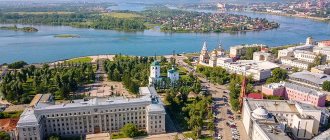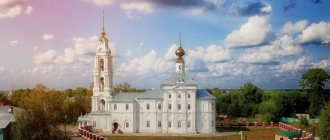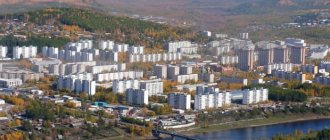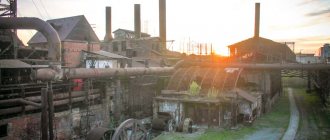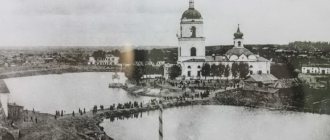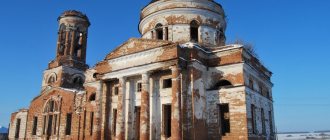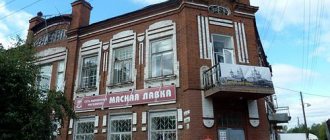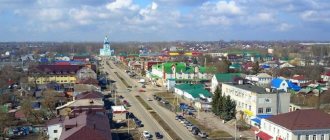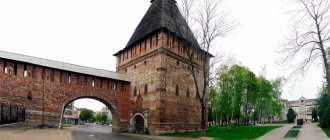Sights of the city of Mikun
Photo courtesy of the advertiser
In the Ust-Vymsky district there is a city such as Mikun; its city status was received back in 1956. It is located just 100 kilometers from the larger city of Syktyvkar. Mikun is surrounded on several sides by taiga and impassable swamp.
The reason for a trip to Mikun can be completely different, for example, for work, to visit. You can choose any method of transportation, for example, it could be a car, train, bus. The last option is perhaps the most optimal both in terms of speed and price. You can look at the Syktyvkar Mikun bus schedule and already find suitable tickets. Here you can select the direction, date, see travel time and ticket prices. It is worth keeping in mind that during the latest events due to COVID, you will need to acquire a protective mask in which you can safely travel to the city of Mikun. This way you will take care not only of your health, but also of other people.
Historical reference
In the Komi Republic, the city of Mikun received its status only from the middle of the 20th century, that is, it is a relatively young settlement. How was it formed and what is its history?
Back in 1937, on the site of the city there was a village near the railway station.
Its main attraction is the history of the construction of the North Pechersk railway line. It was then that a settlement arose in these places, which consisted of endless taiga and marshy swamps (1937).
The project for the construction of the railway was developed by the clergyman and State Duma deputy D. Popov in 1916. He managed to quickly agree on the project, and construction began later. The initial work was carried out using the labor of captured Austro-Hungarians, but after the October Revolution, prisoners of war were removed from the construction site.
In the first post-revolutionary years, no one thought about continuing the development of the north. But during the Civil War, the issue of building a railway line in Komi became acute again.
Active work on the development of Komi will begin only in 1932. One can only imagine what efforts and under what conditions the construction of the railway line took place. Harsh climatic conditions, complete absence of passable roads, dense forests, frozen soils, deep swamps - all this is the north of our country. In addition, the local soil turned out to be completely unsuitable for construction; for these purposes, new soil began to be developed and delivered to the construction site.
Prisoners from two special-purpose camps, “Sevzheldorlag” and “Pechorzheldorlag,” were involved in the construction. Almost 30 thousand prisoners were dispersed in 58 camp special centers. The construction site stretched for hundreds of kilometers across the taiga: forests were cut down, mountains were blown up, swamps were filled in or drained. They worked in two shifts. At the end of 1937, a railway station was built between the Shemazhka and Chub rivers, which was named Mikun. In 1941, the first train with coal from Vorkuta passed through it.
In May 1948, Mikun became a workers' village.
In the early 60s, logging for Bulgaria took place here, and Mikun turned into a key railway junction.
Currently, this is an active railway station; trains with city guests and lovers of a calm and measured holiday in an ecologically clean corner of our homeland come here.
Mikun (station)
Based on the resolution of the Council of People's Commissars of the USSR and the Central Committee of the All-Union Communist Party of Bolsheviks dated October 28, 1937 No. 1952-343, the construction of the railway through the settlements of Konosha - Velsk - Kotlas - Knyazhpogost - Chibyu (now Ukhta) - Kozhva - Vorkuta began. An expedition led by P.N. Eshchenko from the Kharkov branch of the Soyuztransproekt Institute in December 1936 carried out survey work in the area of the future construction site on the Aikino-Knyazhpogost section, noting that in the area of the Shezhamsky swamps on the watershed between the Chub and Shezhamka rivers it is necessary to build a railway station . It received the preliminary name “Watershed”. This laid the foundation for the future Mikun station[4].
The Mikun station itself (the name was transferred from the name of the village of Mikun of the Aikinsky village council, where the survey party for the design of the North Pechora Railway was located) grew out of the Vodorazdelnaya station, which arose in 1937 and where the so-called subdivision No. 19 (prisoner camp) was located. In 1938, when the registration of newly formed railway stations of the North Pechora Mainline began, the Mikun station with three railway tracks was registered on the site of the Vodorazdelnaya station[4].
In 1939, through labor traffic was opened from Aikino to Ukhta, through the Shezham and Mikun stations. Mikun station began to operate as a separate point. During this period, the station's track development amounted to 3 tracks[4].
On December 28, 1941, the first train with coal for besieged Leningrad passed from Vorkuta through the Mikun station, but did not reach its destination, as there were battles there, and the train was sent to Moscow [4].
During the Great Patriotic War (1941 - 1945), the Mikun station acquired important strategic importance: trains with coal, oil, and clothing for soldiers passed through the Mikun station [4].
The village quickly began to develop due to the fact that, starting in 1942, Mikun became a local station. The creation of local stations was primarily related to the operating conditions of steam locomotives. There used to be such a thing as locomotive traction (the distance between stations for which there was enough water and fuel for steam locomotives, this is a distance of 130 - 150 kilometers), for which special local stations were built, where steam locomotives could refuel with water and fuel. The Mikun station, where there were reserves of natural water, became such a station. All railway organizations are gradually moving here from the Knyazhpogost station[4].
In 1942, track unit 9 was relocated to Mikun, and in the same year a communications agency was opened at Mikun station[4].
In August 1945, railway school No. 1 was transferred from the Knyazhpogost station to the Mikun station [4].
In 1945, the railway station building was put into operation[4].
On September 1, 1947, the locomotive depot was transferred from the Knyazhpogost station to the Mikun station, in the fall of the same year the signaling and communication distance was transferred from Knyazhpogost, and in 1948 the car maintenance point was transferred [4].
The registration of the Mikun station was completed in 1948, when the 4th branch of the North Pechora Railway was opened in Mikun (liquidated in 1959 due to the merger of the Northern and North Pechora Railways)[4].
In 1957, construction of the Koslan-Mikun railway line began. After the fact that the Mikun station turned into the largest junction station of the Komi Republic[4].
In January 1958, construction of the Mikun-Syktyvkar railway began[5].
Attractions
The main attractions of the city are:
- the monument-steam locomotive “Lebedyanka”, which is located on the station square;
- monument to the Commonwealth of Home Front and Front;
- Church of the Pachaevskaya Icon of the Mother of God;
- monument to Lenin V.I.;
- Museum of the History of the City and the Northern Railway;
- the old district of the city of Mikun, the photo and appearance of which gives the impression of an absolutely dead settlement.
The formation of the city of Mikun is closely connected with the history of the Gulag. In memory of the difficult time, 5 kilometers from the city, at the site of the mass burial of victims of the camps, a monument in the form of a cross was erected with a memorial plaque on which it is written: “In memory of the victims of repressions of 1937-1954.”
Geographical position
The city of Mikun is located in the Ust-Vymsky region Komi Republic of the Russian Federation. It borders in the northwest with Syktyvkar, in the northeast with the regional center of. Aikino. Occupies an area of 13 square meters. km. Population 10,179 people (as of 2014). Komi and Russians live in the city.
The city is the administrative center of the urban settlement "Mikun" (62. 21 N 50. 04 E).
Climate
The climate of the city of Mikun is moderately cold with long winters and warm, short summers. The average temperature in winter is -15.5 degrees Celsius, in summer +16 degrees Celsius. The average annual precipitation is 500 – 600 mm. The greatest amount of precipitation falls in the warm season.
Natural attractions
Mikun is located between the Dozmorka , Chub and Chaya . Previously, on the site of the city there was dense taiga and swampy terrain. The territory is famous for its coniferous forests.
Story
Initially, in 1937, Mikun Mikun - Koslan railway station The name of the city comes from the name of the village. It received its modern status in 1956.
The city has main attractions, such as the steam locomotive-monument “Lebedyanka” L-5218 which is located on the station square, the monument to V.I. Lenin, the monument to the Commonwealth of Front and Rear , the Church of the Pochaev Icon of the Mother of God . It will also be interesting to visit the Museum of the History of the City of Mikun and the Northern Railway, which presents the history of the development of the railway itself, and the history of the foundation, development of the city, the connection of Mikun with the forced labor system of the Ministry of Internal Affairs. If you cross the railway by crossing the bridge, you can get into an old and abandoned area of the city. Only some of its streets are inhabited. This area resembles an abandoned city. Due to the fact that railway construction work was carried out in Mikuni and its surroundings for a long time, the city turned into the largest junction station of Komi . People began to call the city “railroad gates.”
The cultural traditions of the city and the entire region are developed and supported by the employees of the House of Culture, which is a real highlight.
Famous people
The city of Mikun has been a political prison camp since 1937. Among them was G. Serebryakova , a famous writer.
How to get there
The city of Mikun is located 108 km by road and 96 km by rail from Syktyvkar. There are two stations in the city - Mikun and Mikun 2.
The nearest airport “Syktyvkar” is located 88 km from Mikun .
Famous people
Since 1937, the city became a camp of political prisoners, among whom was the famous Soviet writer Galina Serebryakova, author of novels about Engels and Marx. In 1967, her novel “Smerch”, dedicated to life in the camp, was published in Poland; the novel was published in Russian only in 1989. She survived three exiles, was finally released in 1955, and a year later rehabilitated.
Among her works: “Sketches of China”, “Women of the French Revolution”, “Rickshaw”, the “Prometheus” trilogy, “Food for the Soul”, “Wanderings through the Years Past”, “Precedence”, “About Others and About Oneself”, “One of You”, “From Generation to Generation” and many others.
She died in 1980 and was buried at the Peredelkinskoye cemetery in Moscow.
Private advertisements in Mikun, Komi and Russia
To add an advert
Syktyvkar
Economy class metal beds. Delivery is free throughout the country...
Pechora
Facade cleaner
Ukhta
Services of experienced movers
Syktyvkar
Free premises, 500 m²
123ru.net
- minute-by-minute news with a daily archive. Only here we have all the main news of the day without political censorship. “123 News” - absolutely all points of view, sober analysis, civilized debates and discussions without mutual accusations and insults. If you don’t like it, don’t want to hear it, don’t read it, read it, be mutually polite and correct in your statements. Remember that not everyone's point of view coincides with yours. Respect the opinions of others, even if you defend your views and your position. 123ru.net is a news observer. We do not impose our vision on you, we give you a snapshot of the events of the day without censorship and without cuts. News as it is—online with minute-by-minute archives for all cities and regions of Russia, Ukraine, Belarus and Abkhazia. 123ru.net - live news live! A quick search from 123ru.net is not only the opportunity to be the first to know, but also the advantage of reporting breaking news instantly in any language in the world and being heard right away. You can add your news at any moment - here.
Urban settlement "Mikun"
In order to prepare a draft amendment to the General Plan of the urban settlement "Mikun", the administration of the urban settlement "Mikun" announces public discussions on the draft amendments to the General Plan of the urban settlement "Mikun" (hereinafter referred to as the Project). The text, graphic parts and applications of the General Plan of the urban settlement “Mikun” in the new edition are subject to public discussion.
Public discussions are held from 09/07/2020 to 10/20/2020. Participants in public hearings are citizens permanently residing in the territory of the urban settlement “Mikun”, rights holders of land plots located within the boundaries of this territory and (or) capital construction projects located on them, as well as rights holders of premises that are part of these capital construction projects.
Until 17:00 on October 20, 2020, participants in public discussions can send proposals and comments on the Project to the administration of the urban settlement “Mikun”:
1) in writing to the address: 169061, Komi Republic, Ust-Vymsky district, Mikun, st. Zheleznodorozhnaya, 21, administration building of the urban settlement "Mikun".
2) by recording in a book (magazine) a record of visitors to the exhibition.
For identification purposes, participants in public discussions provide information about themselves (last name, first name, patronymic (if available), date of birth, address of residence (registration) - for individuals; name, main state registration number, location and address - for legal entities ) with attached documents confirming such information. Participants in public discussions or public hearings who are the legal holders of the relevant land plots and (or) capital construction projects located on them and (or) premises that are part of these capital construction projects also provide information, respectively, about such land plots, capital construction projects, premises, being part of the specified capital construction projects, from the Unified State Register of Real Estate and other documents establishing or certifying their rights to such land plots, capital construction projects, premises that are part of the specified capital construction projects.
The Project exposition is organized on the second floor of the administration building of the urban settlement "Mikun" at the address: 169061, Komi Republic, Ust-Vymsky district, Mikun, st. Zheleznodorozhnaya, 21, administration building of the urban settlement "Mikun".
You can download the Project at: https://disk.yandex.ru/d/00zTL6a8HmEqHQ

